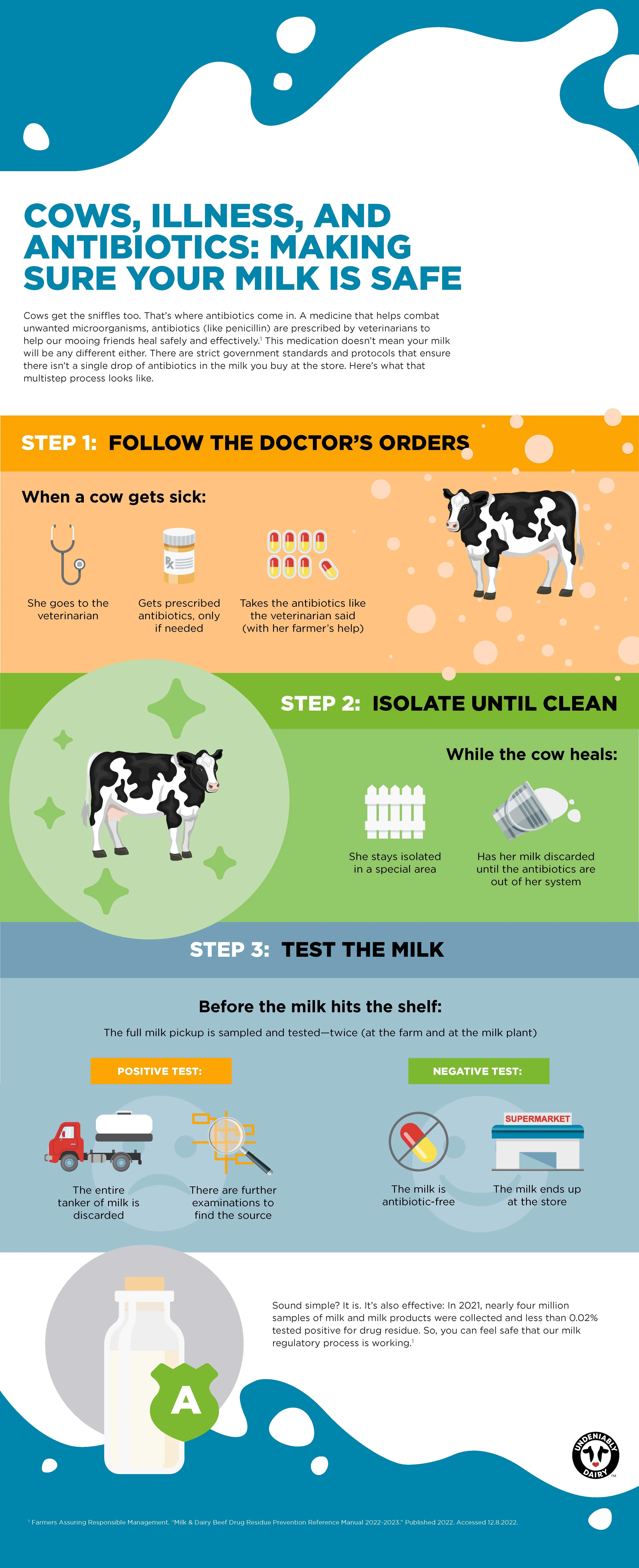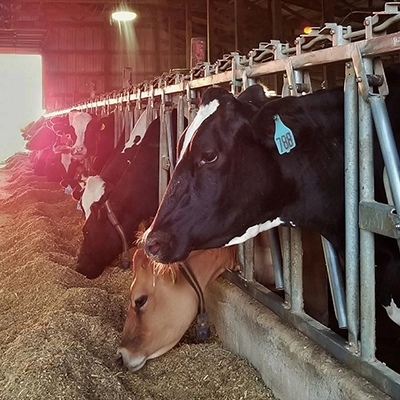Milk and Antibiotics: Making Sure Your Milk Is Safe
Every day, the dairy community strives to do things responsibly; from taking care of cows to making sure your milk is free of antibiotics.
One part of that is helping people understand how antibiotics are used responsibly on a dairy farm, and why you can be assured that all milk at the grocery store is antibiotic-free.
Sometimes it’s necessary for dairy farmers to work with veterinarians to treat their cows with antibiotics when they’re ill, just as we sometimes need medication when we’re sick. However, there are strict government standards and protocols that ensure there aren’t antibiotics in the milk you buy at the store.
How can you know for sure?
In 2015, the FDA’s Center for Veterinary Medicine reported that the milk you buy at your grocery store is safe after collecting milk samples from nearly 2,000 dairy farms across the country.
Here’s how the dairy community makes sure your milk is safe and free of antibiotics.
The Use of Antibiotics to Maintain Cow Health
Dairy farmers take special care to make sure their cows are healthy. When a cow is sick and needs medication, they follow best practices to help the animal recover.
While the cow is on antibiotics, she’ll be housed in a special area, and her milk will be kept separated until the drugs have fully cleared her system. Read one farmer and veterinarian’s story of how she decided to use medicine to help a sick cow recover.
Testing for Antibiotics In Milk
When a milk truck comes to pick up a dairy’s milk, the driver takes a sample of the milk. Once the driver arrives at the milk plant, another sample is taken and tested. But that’s not all.
Should the milk test positive, the entire tanker of milk is discarded, and the individual farm samples are further examined to identify the source.
That farmer is responsible for reimbursement of the entire load. Depending on farm size and other factors, that load of milk can cost the farmer more than $10,000.
















